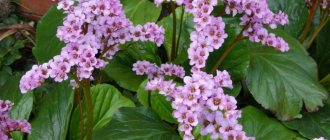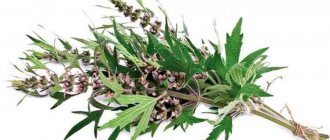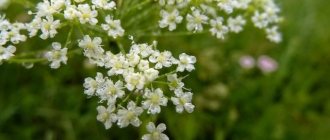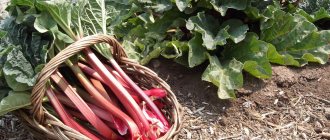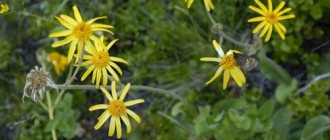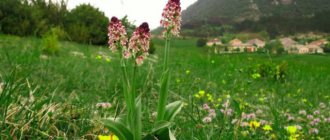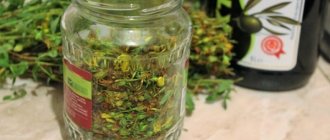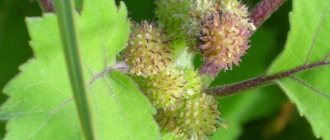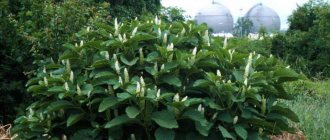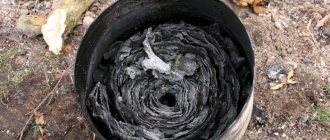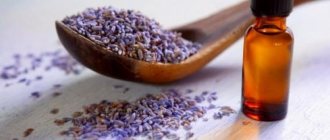How to harvest calamus roots
After which they should be washed off the ground, all excess removed from the roots and cut into pieces of 20-30 cm.
The roots are first air-dried, then the roots are dried in a well-ventilated area.
When artificially drying, the temperature should not exceed 25-30 degrees; if this rule is neglected, the roots will become unusable, because at elevated temperatures the essential oil evaporates .
Medicinal properties
- improved digestion
- stimulates appetite
Reviews of the folk remedy
- I treated heartburn with calamus. I simply chewed the root of the plant and washed it down with water. Stomach pain also goes away very quickly after this treatment. Moreover, I simply pour calamus powder into a spoon and take 1/3 3 times a day. Also drink with water.
- My great-grandmother believed that chewing calamus root every day would help get rid of any ailments. In our family, this remedy has always been used for viral and stomach diseases, as well as for stomatitis or lack of appetite.
- I use calamus rhizomes all the time to improve my digestive system. I take 2 tbsp of calamus powder and pour it into a container. I fill it with hot boiled water. You will need one glass of boiling water. After this, I heat the infusion in a water bath for about 15 minutes. I strain and drink 1/4 cup. Appetite after taking calamus also becomes much better.
- I treat gums with calamus root, just use it as a rinse. It only takes two days to fix the problem.
- Calamus helps me very well during the flu. This is how I treat myself: I simply chew calamus roots and all the bacteria die. In general, calamus can be considered a natural chewing gum, so you can chew it up to 3 times a day.
In folk medicine, calamus is a remedy for all diseases. But any medicine has contraindications, and calamus is no exception. Before using calamus, you should consult your doctor.
Medicinal properties of calamus
Calamus is a powerful nootropic herb that affects higher mental functions.
Nootropics stimulate mental activity, activate cognitive functions, improve memory and increase learning ability.
It has been known as a medicinal plant since ancient times, especially in China and India.
It is an important ingredient in most Ayurvedic medicines.
In the 16th century, German pharmacists sold several hundredweight of this root.
- Bitter essential oil and acorine increase appetite. It increases the secretion of gastric juice, improves digestion, and reduces stomach pain.
- Widely used in herbal medicine as an aromatic stimulant and mild tonic.
- Highly valued as a brain and nervous system rejuvenator and as a remedy for digestive disorders in Ayurveda.
- In small doses it reduces gastric acidity, while large doses increase gastric secretions, which is why it is recommended in the treatment of anorexia nervosa.
- Chewing the root relieves toothache.
- Activates the speech center of the brain. It is useful in treating speech disorders.
- Very effective for mental disorders.
- Used to treat schizophrenia, anxiety, depression and epilepsy. It also improves memory and learning processes.
- Used to treat throat conditions including sore throat, hoarseness, sore throat and related symptoms.
- It improves the pitch and quality of the voice.
- Used as an expectorant. Calamus liquefies phlegm and expels it from your body. Treats whooping cough, especially in children.
- Used in the treatment of various types of cancer such as lung cancer, breast cancer and liver cancer.
Used in the form of infusions, tinctures and powders.
- stomach diseases
- colitis
- hepatitis
- cholecystitis
- tonic for central nervous system depression
- kidney disease
- liver disease
- bladder diseases
- peptic ulcer of the stomach and duodenum
- bad breath
- inflammation of the mouth and gums
- inflammation of the larynx
- angina
- chronic tonsillitis
- stomatitis
- diarrhea
- rheumatism
- gout
- joint pain
- hypothyroidism
- arthritis
- swelling
- obesity
- asthma
- mouth ulcers
- syphilis
Digestive system
Calamus instantly relieves stomach problems. It cleanses the stomach and also relieves headaches caused by poor digestion. It relieves flatulence and colic, increases appetite. Used to treat anorexia, gastritis and stomach ulcers.
Anti-smoking
Chewing calamus root may cause you to dislike the taste of tobacco. Thus, those who are addicted to smoking can quit this habit by using this root. In addition, chewing or smoking tobacco often causes bad breath. Chewing the root can also help eliminate tobacco odor.
Oral diseases
Treats mouth ulcers and eliminates bad odor. Ayurveda uses the root as a pain reliever for toothache.
Treats insomnia
The aroma of calamus root is calming and can be used to treat insomnia. This calming effect can help relax your body and your mind.
Cough and fever
Along with a decoction of licorice root, it has a positive effect on cough, fever and colic in children. For a dry cough, chew calamus root for several minutes.
Skin diseases
Calamus root paste can be used externally for diseases such as eczema, ringworm and scabies. In the Siddha system it is used as a disinfectant for vaginal infections and foul-smelling discharges, mainly after childbirth.
Prevents infections
Calamus root is also capable of preventing infections, both internal and external. Due to its toxic substance, calamus root is used as a natural antibiotic.
For epilepsy
In the Siddha system, calamus is used with equal portions of asafoetida, haritaki, black salt, dry ginger, long pepper and black pepper to treat epilepsy and mental disorders.
Contraindications to taking calamus root
You cannot take:
- during pregnancy;
- with high acidity of gastric juice. In case of emergency, you can introduce it into carefully balanced preparations, which include herbs that suppress the increased secretion of hydrochloric acid;
- with acute inflammation of the kidneys;
- in the acute phase of gastric ulcer;
- for hypotension (arterial hypotension);
- in case of individual intolerance.
Folk remedies from calamus root
- The rhizome powder is drunk with warm milk for sore throat.
- Preparations made from the rhizome are used to stimulate the flow of urine, relieve constipation and cleanse the body of impurities.
- Stewed rhizome is given for fever, cough and poisoning.
- A mixture of rhizome powder with dried ginger powder and honey is taken for partial paralysis of the mouth, chin and cheeks.
- A mixture of rhizomes and cashew oil is used to relieve swollen joints and sore muscles.
- For this, rubbing is used.
- A mixture of rhizome powder and honey is taken as a cure for epilepsy and to treat loss of sanity.
To stimulate appetite and for gastrointestinal diseases
1 tsp crushed roots, pour 2 cups of boiling water, boil for 15 minutes. Drink ½ glass 3 times a day before meals.
For the treatment of jaundice
1 tsp crushed roots, pour 1 cup of boiling water, leave for 20 minutes. Strain. Drink ½ glass 4 times a day.
For inflammation of the mouth and gums
1 tsp Pour 1.5 cups of boiling water over the crushed roots and leave for 2 hours. Strain. Rinse your mouth with warm infusion.
For bad breath
1 tbsp. Pour 1 cup of boiling water over the crushed roots and leave for 30 minutes. Strain. Rinse your mouth.
For inflammation of the larynx, sore throat, chronic tonsillitis, stomatitis
1 tbsp. Add crushed roots to 1 glass of cold water and leave for 5 hours. After this, boil for 20 minutes. Strain. Rinse your mouth.
For gastritis with low acidity
1 tbsp. Pour 1 cup of boiling water over the crushed roots and leave for 20 minutes. Strain. Take ½ glass 4 times a day 30 minutes before meals.
For diarrhea
Take ½ calamus roots and ½ oak bark. 1 tbsp. collection, pour 1 cup of boiling water. Leave in a thermos overnight. Strain. Drink ¼ glass 3-4 times a day before meals.
For rheumatism, gout, joint pain, arthritis
Grind the roots into powder. The daily dose of powder is 5 g. Take before meals.
Take baths for joint pain
2 tbsp. pour 1 cup of boiling water over the roots. Boil for 20 minutes. Leave for 30 minutes. Strain. Take the bath at night for 10-12 days. Water temperature 35-36 degrees.
For cholecystitis
1 tsp. Pour 1 cup of boiling water over the crushed roots and leave for 20 minutes. Strain. Drink 1/2 glass 4 times a day.
For diseases of the bladder, kidneys and urinary tract
1 tsp. pour 1 cup of boiling water over the roots and leave for 20 minutes. Strain. Drink 1/2 glass 4 times a day 30 minutes before meals.
For heartburn
Grind the roots into powder. Take 3-4 times a day, on the tip of a knife. Course 2-3 weeks.
For scrofula, rickets
1 tbsp. l. roots, pour ½ cup boiling water. Leave for 2 hours. Strain. Take according to
1 tbsp. spoon, 3 times a day, 30 minutes before meals.
For diathesis
Take baths. Pour 300 g of rhizome into 3 liters of water. Boil over low heat for 20–30 minutes. Strain and pour into the bath.
For eczema, allergic skin rashes
Take baths. 2 tbsp. l. roots, pour 1 liter of boiling water, boil for 20 minutes, leave for 30 minutes. Strain. The course of treatment is 10–12 baths. Water temperature 35-36 degrees.
For various wounds
Grind the calamus roots into powder and sprinkle it on the wounds.
For irregular menstruation
1 tsp. pour 1 cup of boiling water over the roots and leave for 20 minutes. Strain. Drink ½ glass 4 times a day 30 minutes before meals.
For hair loss
1 tbsp. l. pour 1 cup of boiling water over the roots and leave for 30 minutes. Rub into hair roots.
For dandruff
2 tbsp. spoons of roots pour 1 liter of water, boil for 15 minutes. Strain. Make masks from the decoction: rub the decoction into the roots and leave for 20 minutes. There is no need to rinse the decoction from your hair.
For oily hair
2 tbsp. spoons of roots pour 1/2 liter of boiling water, boil for 2-3 minutes over low heat, cool, strain. Add a tablespoon of vinegar or the juice of 1 lemon, 40 ml of calendula alcohol tincture. Rub into hair roots.
For split ends of hair
2 tbsp. spoons of roots, 2 tbsp. burdock roots pour 1.5 liters of water, boil for 20 minutes. Leave for 6 hours. Rub the decoction into the scalp.
For the flu
Chew the roots.
Compote of calamus and apples
You can make compote from both fresh and dried apples. Fresh apples 300 g (if dry, take 3 times less), pour 1 liter of water and cook until tender. Then add 2 tbsp. dry roots of calamus, if the roots are fresh, you will need 1 cup. Boil. After this, leave for 5-10 minutes. The compote is ready, you can sweeten it if desired. Preferably with honey, when the compote has already cooled down and its temperature does not exceed 40-50 degrees.
To secrete gastric juice (achylia)
Calamus rhizomes 1 part, cinnamon bark 1 part, trifoliate leaf 1 part, orange peel 2 parts, centaury herb 2 parts, wormwood herb 2 parts. 1 tsp collection, pour 1 cup of boiling water. Cool. Strain. Drink 1/4 cup 4 times a day, before meals.
Types of medications
Medicines from calamus root can be of different types. This can be an infusion, alcohol tincture or decoction. Let's figure out how to cook each of them.
Infusion. Dry crushed raw materials are poured with water and boiled for 15 minutes. After this, the product must be filtered. Take half a glass before meals.
Alcohol tincture. The raw materials are placed in alcohol and left to brew for a day. Take 25 drops per day. Sometimes strong wine is used instead of vodka; this remedy is good for getting rid of nausea.
Decoction. Fresh raw materials are poured with water and boiled for 15 minutes. Strain and take half a glass before meals.
Tonic tea
- Calamus roots (1 part)
- Veronica officinalis (2 parts)
- St. John's wort (14 parts)
- Lovage, root (4 parts)
- Wild strawberry, leaves (2 parts)
- Juniper, fruits (1 part)
- Ruta fragrant (4 parts)
- Yarrow (2 parts)
- Chicory root (2 parts)
- Rose hips, fruits (4 parts)
2 tbsp. collection, pour 0.5 liters of boiling water. Leave overnight. Take 3 times a day, 30 minutes before meals, in equal parts.
Calamus for neurological diseases
The drug helps with amnesia, epilepsy and hysteria. To prepare it, pour 20 grams of dry root with 100 grams of vodka. Leave for two weeks in a dark, cool place. After the tincture is ready, pour it into a dark glass container. Before meals, you need to take 25 drops three times a day.
This elixir will help not only with epilepsy. It will improve digestion, heal ulcers and gastritis, and restore vision.
Before each use, do not forget to consult your doctor and also find out if you have any contraindications to the use of calamus root.
Calamus root in Ayurveda
Headache. Make a paste from the roots. Apply this to the sore area.
Rheumatoid arthritis. Apply the root paste to the affected areas.
Cholera. Grind the roots. Boil 1 teaspoon in 1 liter of water. Strain. Drink 4 times a day.
Cough. Roast calamus root and make powder out of it. Take a pinch of this powder and mix with honey. Take 2 times a day.
Stomach upset. Drink a decoction of the root 4 times a day.
Infection. Chew or lick a small piece of the root.
Skin ulcers and wounds. Grind the root into powder. Sprinkle them on the ulcer or wound.
Whooping cough. Take 1 tablespoon of calamus powder with honey 2 times a day.
Stomach problems. Chew small pieces of the root and swallow the saliva. For chronic diseases, the root can be chewed 3-4 times a day. Do not swallow the pulp.
Smoking. Chew the dried root.
Wounds, burns and ulcers. Place 1 tablespoon in ½ cup of boiling water and leave for 5 minutes. Used as an external remedy for burns, wounds and ulcers.
Bloating. Roast the root, mix with coconut oil and apply to the stomach for 30 minutes.
Asthma. Prepare a decoction. Take 1 teaspoon every 4 hours.
Epilepsy. Tie the rhizome around your waist. Nervous disorders. Consume 1 mg of rhizome powder daily. It helps in strengthening the nervous system. Note: Consumption of more than 1 g will result in vomiting.
Autism. Prepare a decoction of the roots. Take 2 tablespoons 2 times a day.
Cold. Add root powder to boiling water. Inhale the vapors for 3-5 minutes. Speech disorders. Mix the crushed root with honey. Apply this mixture on your tongue. Or prepare a decoction by adding 1 tablespoon of dried root to 2 cups of water and boil for 5 minutes. Take 1 glass per day.
Aphrodisiac. Make a tea from the roots. Strain and drink. This will increase your sexual potency. A sore throat. Take a piece of root and grind it. Take a small piece and suck on it for 3-5 minutes.
Stuttering. Take a pinch of calamus powder and mix with honey. Take regularly. This will help in treating stuttering disorders.
Throat diseases. Consume root powder mixed with honey regularly. It cures all throat diseases.
Amnesia. Dry small pieces of roots in the shade. They then need to be ground to make powder. Consume this powder with warm milk daily, morning and evening.
Tonsillitis. Apply the paste of crushed roots on your throat for 10-12 hours. Relieves inflammation.
Bloating. Take cumin, chamomile and calamus root. Prepare a decoction. Drink it 2 or 3 times a day.
Colic. Prepare a decoction of cumin, chamomile and calamus.
Bloating. Mix the ash generated by burning the roots with castor oil. Apply the paste to the lower abdomen.
Stomach problems. Apply the paste by mixing the ash obtained by burning sweet flag roots with castor oil on the lower abdomen. Do this regularly until the symptoms disappear.
Cough. Grind the roots into powder. Mix 1/4 teaspoon with the same amount of licorice powder. Add the mixture to 2 cups of water. Prepare a decoction. Take 4 teaspoons, 3 times a day.
Fever. Mix licorice root powder and calamus in equal proportions. Prepare a decoction in 2 glasses of water. Cool. Take 4 times a day in equal parts.
Abdominal pain. ¼ teaspoon calamus powder and licorice root. Prepare a decoction in 2 glasses of water. Drink 20 ml, 3 times a day.
Diarrhea. Take 1/2 teaspoon of powder. Mix with honey. Take every morning on an empty stomach.
Fever. Mix honey with 2 pinches of calamus powder. Take every morning on an empty stomach.
Bloating. Grind the dried calamus roots into powder. Take a pinch and mix with honey. Take every morning.
Baldness. Take 5 grams of calamus root powder and mix it with 10 grams of coconut milk. Apply the paste to the affected part. Leave for 30 minutes. Rinse with water.
Stomach upset. Burn the calamus roots to ash. Mix a pinch of ash with honey. Take 1 time per day.
Toothache. Take equal quantities of cumin and calamus. Grind into powder in equal quantities. Apply to the sore tooth overnight.
Abdominal diseases. 50 g calamus root and 30 g licorice root powder. Prepare a decoction. Drink 10 ml, 3 times a day.
What does the herb treat?
Calamus is useful for high blood pressure, gastritis, and stomach ulcers. The plant is also widely used for lung diseases, tuberculosis, and rheumatism. Calamus root is very popular in the treatment of colds, bronchitis, and headaches. It helps to quickly clear the airways.
This plant increases the secretion of bile in the liver and the secretion of hydrochloric acid in the stomach due to the presence of a bitter glycoside. Calamus has a strong diuretic and analgesic effect.
Due to its expectorant properties, calamus is used during influenza. To heal wounds and ulcers on the skin, a decoction of calamus is used, as it has a strong disinfecting effect. Powder obtained from dry calamus root is also used. Preparations from this plant are used for jaundice and gastritis, for diathesis and bladder diseases, and for diarrhea.
This plant has a good effect on sore throat and stomatitis rashes in the mouth, so it is used to gargle and rinse the mouth. To strengthen gums and teeth, use dry calamus root powder.
Calamus preparations increase appetite and are used for anorexia. Thanks to the essential oil, calamus also copes well with attacks of colic in the intestines. Calamus root is used to treat leukemia. It also helps with bad breath. Calamus preparations can quickly lower blood pressure.
Calamus is also used for hepatitis, rickets and scrofula in children. It is often prescribed for neuroses. Calamus decoction is used for many female diseases. Treatment occurs by douching with calamus infusion or decoction, as well as using sitz baths.
Calamus destroys drugs and neutralizes their toxic effects. Taking calamus powder with honey in the morning and evening can significantly improve memory.
How else is calamus used?
- The leaves are used to make baskets.
- Used as thatch for roofs.
- The essential oil from the rhizome is used in perfumery and as a food flavoring.
- Effective against flies.
- Used for storing rice, it greatly reduces losses caused by insect damage because the oil at the root sterilizes male rice weevils.
- All parts of the plant can be dried and used to repel insects or to scent cabinets.
- Can be used as incense.
- The growing plant repels mosquitoes.
- Used as a pond plant in gardening.
- Calamus root is cut into disc-shaped beads and made into bracelets, which are usually worn by newborns for the first few months.
- Used in toothpastes.
Calamus marsh, plant description
Calamus is a perennial herb native to India and China. It has a bright green stem, reaching about a meter in height, erect, with a median groove, ending with a pointed end, crowned with a peduncle.
The plant is not branched, botanically similar to reeds, the root system is well developed, represented by a flattened cylindrical shape, twisting and creeping, with many branches. The roots of calamus are located in the upper layers of the soil, have a bitter-sharp taste and a persistent spicy aroma.
Calamus leaves have a narrow, linear, sword-shaped shape, emerald color and fleshy density. They are arranged in formed bunches and often grow together, surrounding the stem.
The inflorescences are represented by small yellow flowers, with a six-leaved perianth, collected in cylindrical tassels. The size of the inflorescence brush reaches 10 cm in length, the flowers sit tightly in the inflorescence, which creates the appearance of volume. Flowers have 5-6 stamens opposite the petals and one pistil. Flowering begins in mid-summer and lasts about a week.
Calamus fruits are dryish, thick-skinned, multi-seeded berries, dark red in color, similar to physalis berries.
Reproduction of the plant occurs vegetatively; in the wild, this occurs by dividing the bush, during river floods, the water of which carries the rhizomes from the banks and washes them to a new place. In our country, marsh calamus grows in the middle zone and in the south, in forest, swampy zones and along the banks of reservoirs. The concentration of marsh calamus can be seen along the banks of the Irtysh and Volga.
Calamus has always been valued in the East; merchants brought it as a spice about four thousand years ago. It was from the East that calamus smoothly migrated to ancient Rome, Greece, then to Turkey, where oriental delicacies were prepared from the plant and were nicknamed “incense canes.”
In European countries, calamus was called “Tatar grass” after 1570, when the Austrian ambassador brought an aromatic herb from Turkey as a gift to the botanical garden in his homeland. In 1780, calamus was recognized as a medicinal plant and began to be used in the preparation of medicinal herbal preparations.
In Rus', calamus appeared during the period of Tatar oppression; the invaders believed that the grass could cleanse water bodies and make them drinkable, so they artificially planted rhizomes along the banks of large rivers and lakes.
The ideal place for the development of marsh calamus is considered to be the banks of rivers and lakes, as well as marshy areas, wet peat bogs, where the plant forms continuous thickets.
Application of calamus tincture
For joint pain, make compresses from calamus tincture with vodka. The compress should be kept for at least 2 hours, and preferably from evening to morning. Additionally, you can take the tincture (according to recipe No. 1) orally: 20–25 drops per 50 ml of water 2 times a day half an hour before meals.
According to the same scheme, the tincture is taken for urolithiasis, for prevention during a flu epidemic, and in the treatment of nicotine addiction. To make it easier to quit smoking, you can take calamus wine tincture: 2-3 times a day, 30-40 drops, half an hour before meals.
For the treatment of bronchial diseases, including bronchitis and bronchial asthma, 3 times a day, half an hour before meals, take 20–25 drops of tincture No. 1 or 10–15 drops of tincture No. 2 (dissolve in 50 ml of water). Those for whom strong alcohol is contraindicated can take 30–40 drops of wine tincture 3 times a day half an hour before meals. The course of treatment is a month, then take a break for a week. Up to 6 courses per year are allowed.
The same scheme is followed for:
- treatment of male impotence;
- problems with memory and concentration (calamus contains substances that strengthen blood vessels in the brain).
- irritability, hysteria, migraines.
For dermatitis or acne, the tincture according to recipe No. 1 is diluted with water in a ratio of 1:3 (per 50 ml of tincture - 150 ml of water). The resulting lotion is used to wipe the affected areas of the skin every day.
If you have an upset stomach, you need to drink a tablespoon of calamus tincture with vodka.
Recipes for using calamus
Root infusion
Twenty grams of the crushed root mixture is poured with boiling water (two hundred milliliters), covered and placed in a water bath. The process lasts fifteen minutes. Next, the container is removed from the heat and cooled for one hour, then the composition is filtered, and boiling water is added if necessary. Drink fifty milliliters per day.
Root decoction
Three teaspoons of the mixture, previously crushed, are filled with water (two hundred milliliters) and set to boil for fifteen minutes. Consume one hundred milliliters before meals. Helps with painful menstruation, neurosis and headaches.
Vodka tincture
Twenty grams of the preparation is filled with alcohol (two hundred grams), the contents are covered with a lid and infused for ten days, always in a cool room. Apply ten drops in the morning, afternoon and before bed. Taken before meals. The tincture is useful in the treatment of prostatitis, viral diseases and for improving potency.
